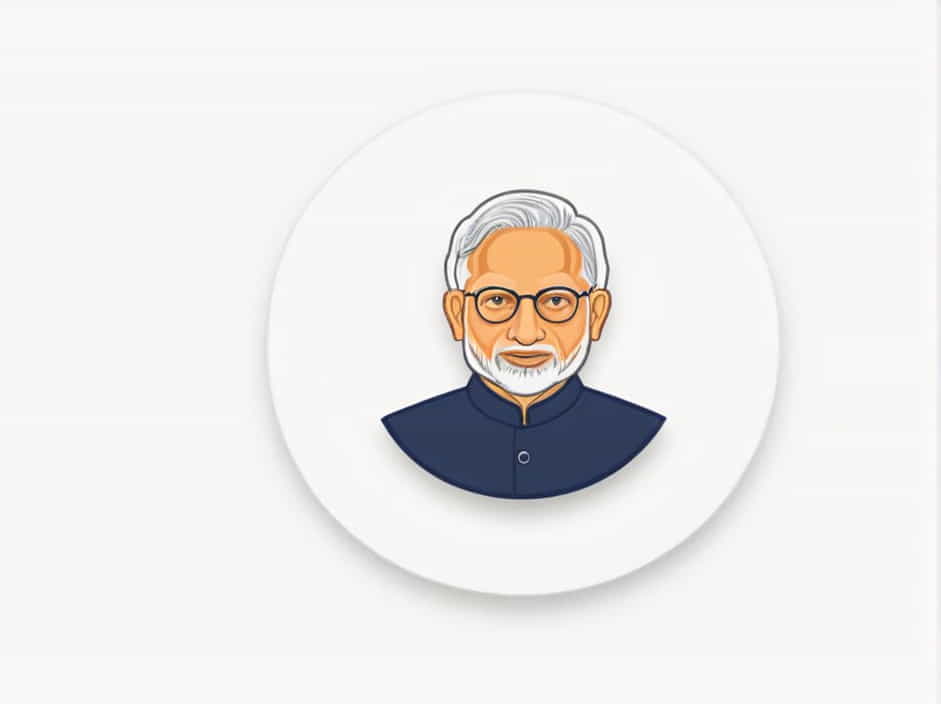The Prime Minister of India is the head of the government and the most powerful political leader in the country. As the chief executive of the nation, the Prime Minister plays a crucial role in formulating policies, making key decisions, and leading the country’s administration.
Since India’s independence in 1947, the Prime Minister has been instrumental in shaping the nation’s domestic and foreign policies. This topic explores the roles, responsibilities, powers, and historical significance of India’s Prime Minister. It also highlights some of the most influential leaders who have held this position.
Role and Responsibilities of the Prime Minister
The Prime Minister of India serves as the head of government, overseeing the functioning of the country’s administration. Some of the key responsibilities include:
1. Head of the Government
The Prime Minister leads the executive branch of the government and ensures the smooth implementation of laws and policies.
2. Leader of the Council of Ministers
As the head of the Union Cabinet, the Prime Minister selects ministers, assigns them portfolios, and oversees their performance. The Council of Ministers is responsible for policymaking and governance.
3. Chief Advisor to the President
The President of India is the constitutional head of state, but the Prime Minister advises the President on important matters, including:
-
Appointment of ministers
-
Dissolution of Parliament
-
Policy decisions
4. Decision-Maker on National and International Issues
The Prime Minister plays a key role in shaping foreign policy, conducting diplomatic relations, and representing India on the global stage.
5. Leader of the Parliament
The Prime Minister is the leader of the Lok Sabha (House of the People) and is responsible for presenting government policies, defending decisions, and ensuring the passage of important bills.
6. Economic Policy and Development
The Prime Minister plays a crucial role in economic planning, budget allocation, and infrastructure development. Major economic reforms and policies are decided under the leadership of the Prime Minister.
7. Defense and Security Oversight
The Prime Minister is responsible for national security and defense strategies. As the head of the Cabinet Committee on Security (CCS), they make crucial decisions regarding the country’s military and intelligence operations.
8. Crisis Management and Disaster Response
During national emergencies, natural disasters, or pandemics, the Prime Minister leads the country’s response efforts, ensuring effective coordination among various government agencies.
Powers of the Prime Minister
The Prime Minister of India holds extensive powers in both domestic and international affairs. Some of the key powers include:
1. Executive Powers
-
Appointing and dismissing ministers.
-
Controlling the functioning of ministries.
-
Directing government policies and programs.
2. Legislative Powers
-
Influencing law-making by presenting bills in Parliament.
-
Recommending dissolution of the Lok Sabha to the President.
-
Making crucial decisions on constitutional amendments.
3. Financial Powers
-
Preparing and presenting the Union Budget.
-
Allocating funds for various government projects.
-
Directing economic policies and reforms.
4. Foreign Policy and Defense Powers
-
Representing India in international forums.
-
Negotiating treaties and agreements with other countries.
-
Taking major decisions on national defense and security.
Historical Significance of India’s Prime Ministers
Since 1947, India has had many influential Prime Ministers who have shaped the country’s political, economic, and social landscape. Some of the most notable leaders include:
1. Jawaharlal Nehru (1947-1964)
As India’s first Prime Minister, Nehru laid the foundation for modern India. His policies focused on industrialization, education, and non-alignment in foreign affairs.
2. Indira Gandhi (1966-1977, 1980-1984)
Indira Gandhi was India’s first female Prime Minister. She played a crucial role in strengthening India’s defense, launching the Green Revolution, and leading the country during the Bangladesh Liberation War in 1971.
3. Atal Bihari Vajpayee (1996, 1998-2004)
Vajpayee was a strong advocate of economic liberalization and is remembered for nuclear tests in 1998 and the development of India’s infrastructure, including the Golden Quadrilateral Highway project.
4. Manmohan Singh (2004-2014)
As an economist and reformist, Singh played a key role in liberalizing India’s economy and achieving high GDP growth during his tenure.
5. Narendra Modi (2014-Present)
Modi’s tenure has seen significant reforms, including:
-
Make in India to boost manufacturing.
-
Digital India for technological growth.
-
Abolition of topic 370 in Jammu & Kashmir.
Challenges Faced by the Prime Minister
The Prime Minister of India faces multiple challenges, including:
1. Economic Growth and Employment
Ensuring stable economic growth, reducing unemployment, and attracting foreign investment are major challenges.
2. National Security Threats
India faces border tensions, terrorism, and cybersecurity threats. Managing national security is one of the most critical responsibilities of the Prime Minister.
3. Social and Political Issues
Managing religious, caste, and regional conflicts requires strong leadership and effective policies.
4. Climate Change and Environmental Sustainability
Addressing pollution, deforestation, and water scarcity is crucial for India’s long-term development.
5. Global Diplomacy
Maintaining strong international relations while protecting India’s national interests is an ongoing challenge.
Key Policies and Reforms Introduced by Indian Prime Ministers
Over the years, Indian Prime Ministers have implemented key policies and reforms to shape the nation’s progress. Some major initiatives include:
1. Green Revolution (Indira Gandhi)
This policy helped India become self-sufficient in food production, reducing dependency on imports.
2. Economic Liberalization (Manmohan Singh, 1991)
India shifted from a socialist economy to a market-driven economy, leading to increased foreign investment.
3. Digital India (Narendra Modi, 2015)
This initiative aims to boost digital infrastructure, improve internet connectivity, and promote online governance.
4. Make in India (Narendra Modi, 2014)
This program encourages domestic manufacturing to reduce imports and boost employment.
5. Ayushman Bharat (Narendra Modi, 2018)
A healthcare scheme providing free medical treatment to millions of low-income families.
The Prime Minister of India holds one of the most powerful positions in the country, responsible for shaping its political, economic, and social future. Over the years, strong leadership and visionary policies have helped India become a global economic powerhouse.
As new challenges emerge, the Prime Minister’s role will continue to evolve, ensuring that India remains a strong, progressive, and resilient nation.
